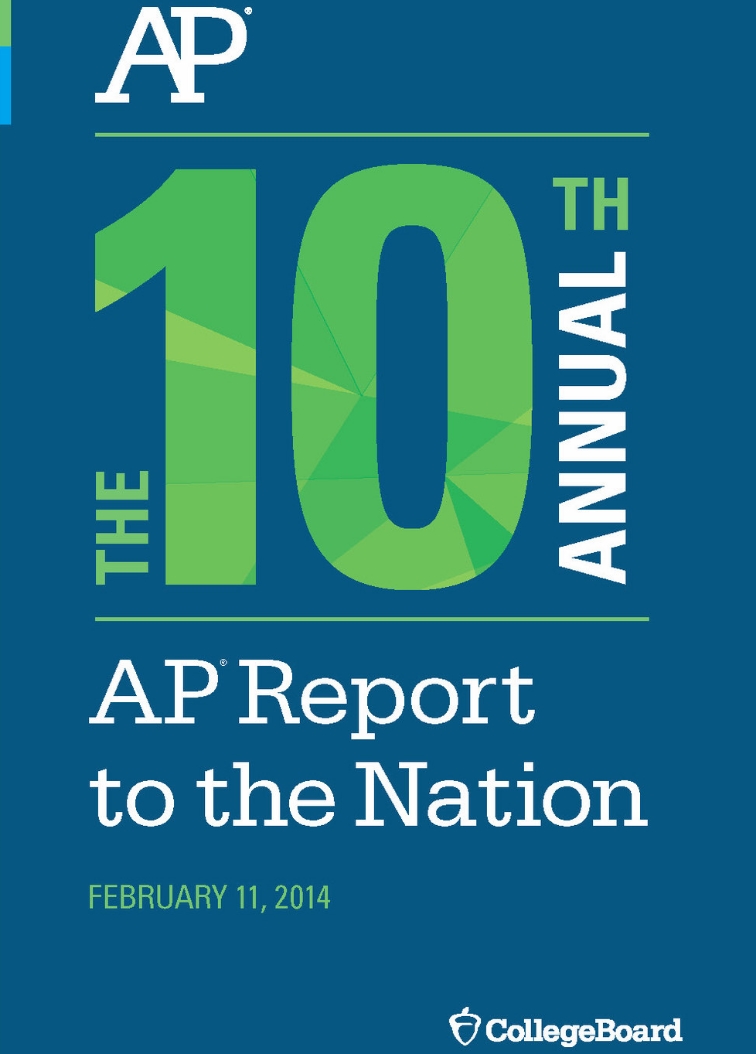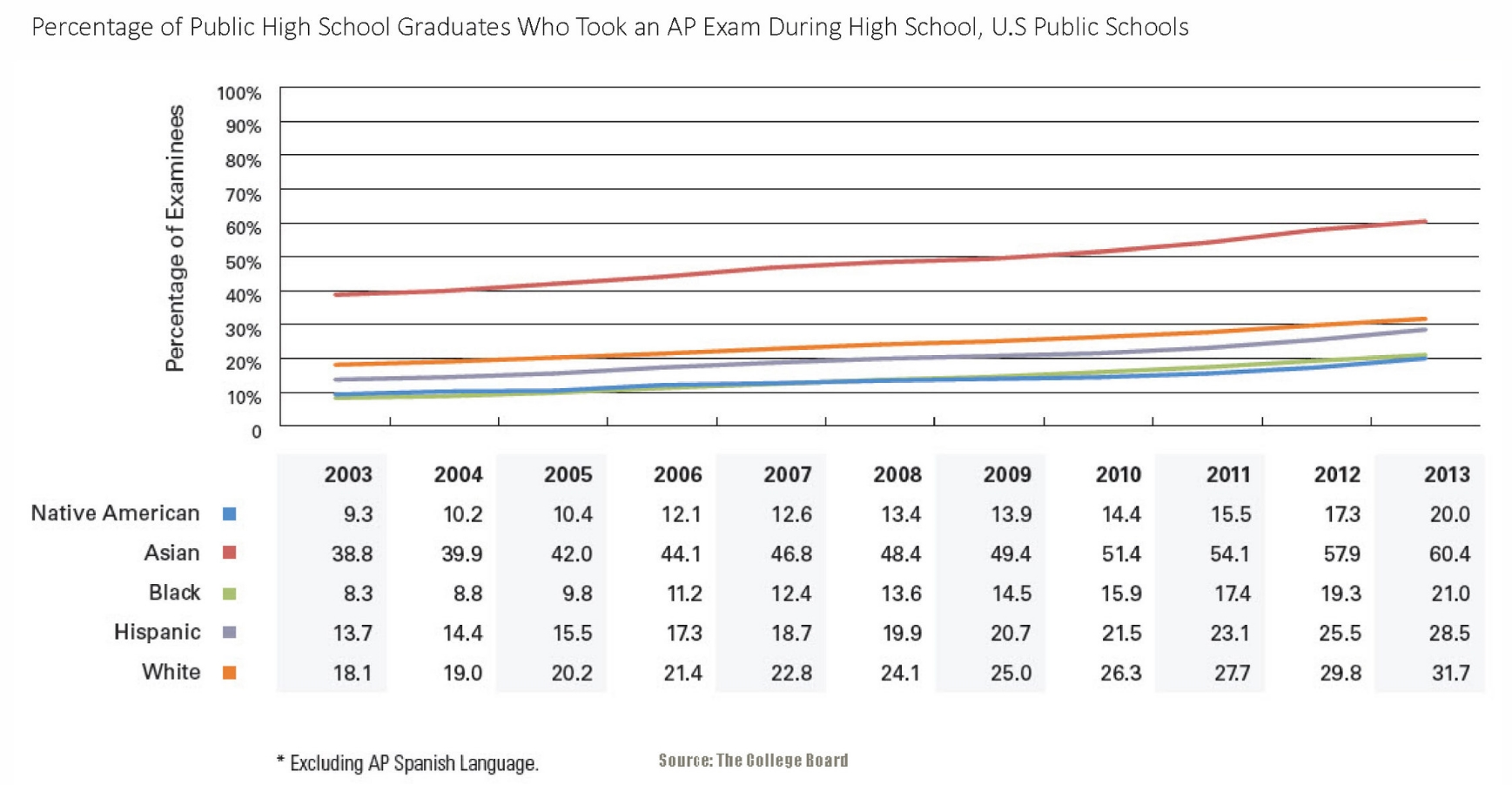"All In," a campaign from the College Board to encourage Latino students to enroll in AP courses, is in high gear. The campaign was developed after an analysis of most recent data showed thousands of Latino students who have demonstrated the potential to do well in AP courses are not enrolling in them — even when their schools offer those courses.

"All In," a campaign from the College Board to encourage Latino students to enroll in AP courses, is in high gear. The campaign was developed after an analysis of most recent data showed thousands of Latino students who have demonstrated the potential to do well in AP courses are not enrolling in them — even when their schools offer those courses.
Although Latino participation in AP courses has been growing and according to The Education Trust, has almost tripled in the last decade, their rate of enrollment still lags behind white and Asian students. This deficit continues despite years of efforts by educators across the country to steer qualified underrepresented and low-income students toward advanced placement work.
The goal of the “All In” program is to dramatically increase the number of minority students who participate in advanced placement. It is a multi-year, multifaceted, coordinated campaign aimed at students, parents and educators to boost the percentage of African- American, Latino, and Native American students enrolled in AP.
“When we say ‘All In,’ we mean it,” said David Coleman, chairman and CEO of the College Board. “We want 100 percent of students who have demonstrated the potential to be successful in AP to take at least one AP course.”
Hispanics and AP
The AP program enables students to take college-level courses and exams, and to earn college credit or placement while still in high school. The program offers 38 courses and exams. At the end of the course, students must get a score of 3 or higher out of 5 in order to have it count as college credit. Some studies show students who take AP classes also do better in college, since these rigorous classes expose students to college-level work.
Among Latinos who take AP work, Spanish language remains the most popular exam. While performing well on the exam can be a catalyst for Hispanics to enroll in other AP courses, the high rate of passing grades has been attributed to the fact that many Hispanics already speak Spanish when they are tested. Other popular AP courses for Hispanics include English language and literature and history. The greatest deficit in Hispanic AP enrollment is in math and science where 4 out of 10 Latinos who showed potential for success in AP science course work took such classes, as opposed to 6 out of 10 Asian-Americans
The College Board’s campaign comes in recognition of the AP equity gap and need to expand opportunities for students nationwide. It builds on progress at the state level in which 28 states have shown increases in the Hispanic/Latino representation among AP exam takers and those scoring 3 or higher. Latest figures show Illinois is one of the leaders in Latino student participation on AP exams. In 2014, Latinos made up 18 percent of Illinois high school graduates but represented more than 20 percent of graduates who took at least one AP exam. According to the Illinois State Board of Education, the number of Latinos students taking AP courses statewide quadrupled in a decade from 2160 in 2004 to 9287 in 2014.
Targeting Parents and Students

College Board officials caution that enrollment efforts cannot be a one- shot deal. Instead they advise educators that “repetition is necessary because for many students, taking AP courses is a big and scary step, so you’ll probably have to bring it up more than once.” Most importantly the message must be that AP is linked to college and success. In College Board focus groups and polls, students report they are motivated to take AP classes because they feel the courses give them a “leg up in college” and will make them more successful in the future.
The “All In” campaign encourages educators to use PSAT scores and other tools to help identify African- American, Latino, and Native American students in school who might succeed in AP classes and who otherwise may be overlooked. Once students are identified, efforts must be made to reach out to students and their parents, counselors and teachers.
Here are a few highlights of the “All In” campaign recommended strategies:
Meet individually or in groups with every student of color with AP potential to encourage them to take the AP class for which they have shown potential. Students have repeatedly said that “being the only one” is a barrier to their participation and that adult personal contact can make all the difference.
Meet with AP teachers and mention the students of color who have shown potential in their discipline. Ask them to meet with those students to encourage them to take AP classes.
Reach out to parents by generating letters and making follow-up calls to tell the parents about AP.
Establish a buddy system. For each discipline, arrange meetings between current or former AP students of color and students of color who have shown AP potential.
Monitor which students enroll in AP classes or prerequisites and followup with students who have not enrolled.
Use all available communication tools such as bulletin boards, school newsletters websites, morning announcements, Twitter, and the school Facebook account.

The campaign also offers a series of videos featuring working- class students such as Luhit Recinos, who took AP courses in high school and encourages other Latinos to enroll.
Responding to Critics
The drive toward more AP participation is not without its critics. John Tierney, a writer for the Atlantic magazine wrote in 2013 that although AP courses were started with good intentions, the concept has been “corrupted” and has become a moneymaking vehicle for the College Board. As someone who taught both high school and college, Tierney argued that the AP high school course “did not hold a candle” to his college-level course. He also said that “the AP curriculum prescribed a plan of study that squelches creativity and free inquiry and covers too much material too quickly and superficially.” Diane Ravitch, a well-known research professor of education at New York University, has posted similar criticisms on her blog, adding that “students know that AP is far more about gaming the college acceptance process than it is learning.”
When rebutting these criticisms, College Board officials offer their own body of research about positive performance outcomes of the AP program. In May 2015, the National Bureau of Economic Research released a study that showed gains in college graduation rates associated with Advanced Placement exams that lead to the granting of college credit.
Although the debate about the value of AP work continues, Trevor Packer, a senior vice president at the College Board commented that the AP program stands as a tribute to the work of “teachers, students, and college professors to create and attain a much higher standard for secondary schools that has typically been the case.”